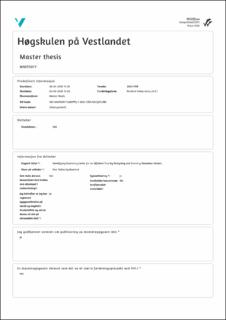| dc.description.abstract | What are the operating limits of a vessel? This is one of the most frequently raised questions raised in the maritime industry. On the one hand, if the limits are set too high it might endanger the goods, the environment, the vessel itself, and even the lives of the crew. On the other, if limits are set too conservatively, operations may be delayed or goods may not arrive on time due to stringent weather restrictions, which in turn leads to economic and reputational damage.
This thesis presents a methodology to develop such operating limits with the use of a full mission simulator using as an example the tow dyad of the vessel EMS TUG and the barge EMS PONTON 7.
The designing of the models, in particular their hydrodynamic behavior, is only touched upon in this thesis. To create a model which truly behaves like the actual vessels, a scaled model and runs in a test basin would be necessary.
The models, in the course of this thesis, were used to perform test runs in the full mission simulator at the maritime campus in Leer of the University of Applied Science Emden – Leer. A set of regular wave conditions were chosen in order to test the vessels’ responses. The corresponding data was then extracted and examined to determine whether defined acceptance criteria, such as a maximum heeling angle due to wave induced rolling motion, were exceeded.
Maximum significant wave heights of 2.4 meters to 4 meters, depending on the wave period, have been determined to be the limit for the tow. It is however prudent for marine operations to not only define the operating limits, but also to put them into perspective with regards to the weather forecast. The further into the future a forecast predicts particular conditions the higher the uncertainty, i.e. the more safety margin has to be allowed for.
However, the results for the operating limits of the EMS TUG and the EMS PONTON 7 presented in this paper should in no way be applied to actual operations, since the methodology is the primary focus of this thesis. | en_US |

